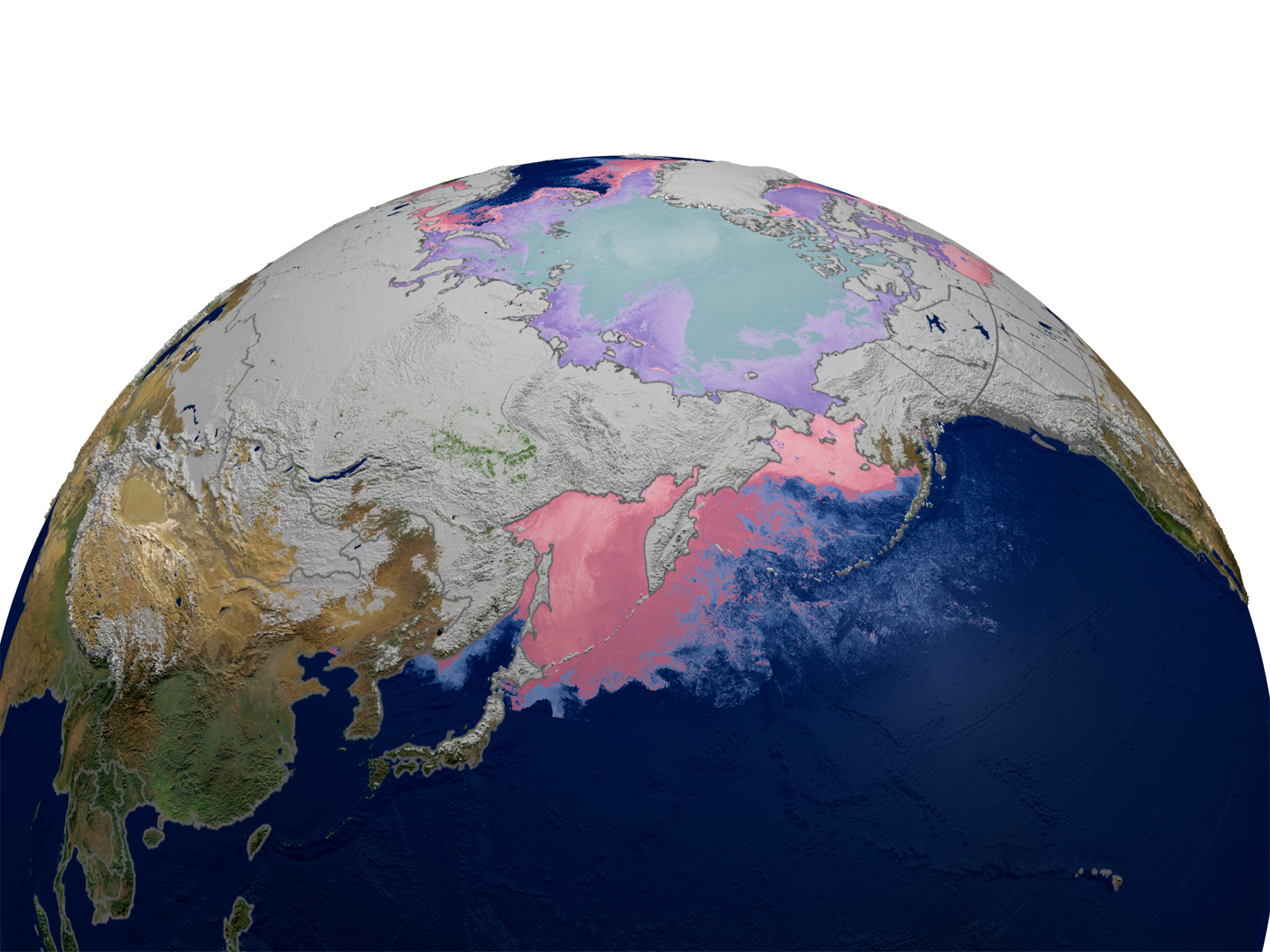“MODIS Daily Global Snow Cover and Sea Ice Surface Temperature” by GST – NASA/Goddard Space Flight Center
Conference:
- SIGGRAPH 2005 More animation videos from SIGGRAPH 2005:


SIGGRAPH Video Review:
Track:
- 03
Title:
- MODIS Daily Global Snow Cover and Sea Ice Surface Temperature
Length:
- 3:00
Director(s):
Company / Institution / Agency:
- GST – NASA/Goddard Space Flight Center
Description:
This animation of the Northern Hemisphere portrays data collected via daily MODIS satellite images acquired during the winter of 2002-2003. A circle of darkness increases with the onset of autumn, reaching a maximum at the winter solstice on December 21st. Thereafter, darkness shrinks as the period of daylight increases.
Daily changes in sea ice are shown as ice-surface temperature. Sea-ice surface temperatures range from about -40 to -2 degrees Celsius. Here, ice-surface temperatures are depicted by colors, with temperatures near freezing shown in shades of pink. Colder ice is shown in purple shades, while the coldest ice is shown in shades of blue/grey.
The snow tracks of several winter storms across the United States can be clearly seen. Snow from such storms may melt quickly or linger for weeks. With an albedo of up to 80% or more, snow-covered terrain reflects most of the incoming solar radiation back into space, cooling the lower atmosphere. When snow cover melts, the albedo drops suddenly to less than about 30%, allowing the ground to absorb more solar radiation, which heats the Earth’s sur-face and lower atmosphere. Rapid changes in albedo, resulting from snowfall and snowmelt, cause significant changes in the regional energy balance.
Hardware:
Linux and Mac OSX-based hardware systems
Software:
Renderman, Maya, Photoshop, and IDL. Edited with Adobe After Effects
Additional Contributors:
Director: Dorothy Hall, NASA
Producer: Horace Mitchell, NASA
CONTRIBUTORS
Written by: Dorothy Hall – NASA, George Riggs – Science Systems & Applications, Inc., Cynthia Starr – Global Science & Technology
Science Advisors: Dorothy Hall – NASA, George Riggs – Science Systems & Applications, Inc.
Lead Animator: Cynthia Starr, Global Science & Technology
Contributors: Randall Jones – Global Science & Technology, Alex Kekesi – Global Science & Technology, Kevin Mahoney – Computer Sciences Corporation
Marte Newcombe – Global Science & Technology, Lori Perkins – NASA, Greg Shirah – NASA, Stuart Snodgrass – Global Science & Technology, Eric Sokolowsky – Global Science & Technology, James W. Williams – Global Science & Technology
Music: Robert Hitz – Zederwalt Music
Narration: Michael Starobin – Honeywell Technology Solutions
Audio Recording: Fred Kemman – Honeywell Technology Solutions
Audio Mixing: Mike Velle – Honeywell Technology Solutions
MODIS data courtesy of the MODIS Science Team NASA Goddard Space Flight Center
Blue Marble MODIS data composite courtesy of the MODIS Science Team and the NASA Earth Observatory Reto Stockli Science Systems & Applications, Inc.
SeaWiFS data courtesy of the SeaWiFS Project and ORBIMAGE




